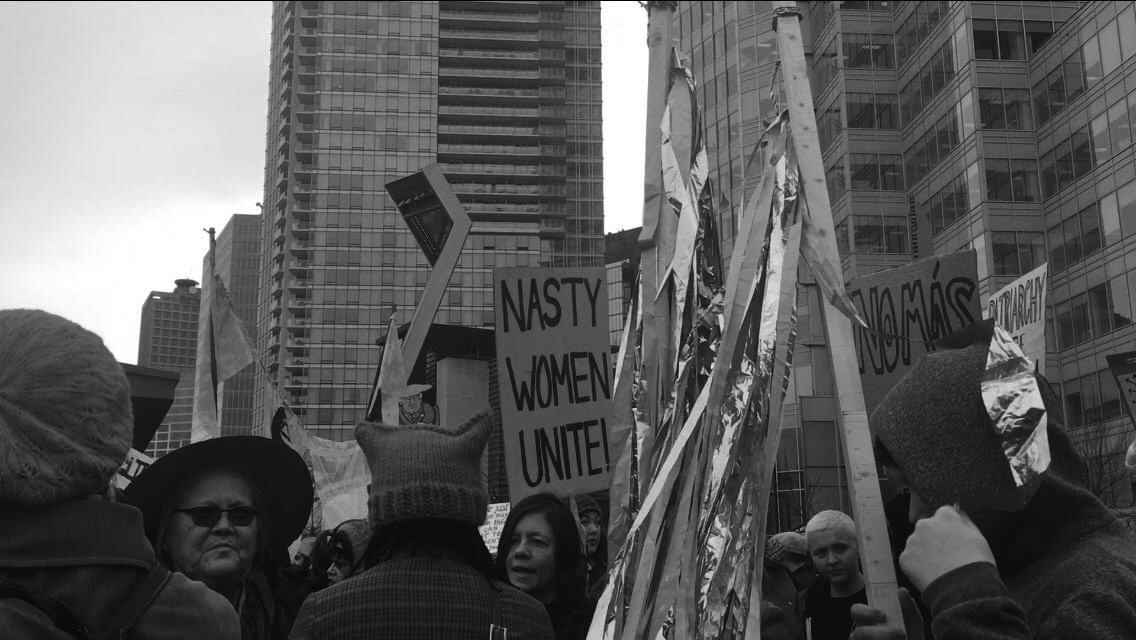RIZELLE ROSALES; Mast Magazine Assistant Editor; rosalera@plu.edu
It was a rainy morning in October 1789 when thousands of French women marched from the streets of Paris to Versailles protesting national starvation, monetary inflation and the incompetent monarchy. In doing so, they contributed to the resilient and permanent role for women in revolutionary movements.
Fast forward a century or two, and you’ll find the 1956 Women’s March in South Africa. To protect their human right to freedom, justice and security, 20,000 women from all over the country marched through the city of Pretoria, carrying anti-apartheid petitions that proudly proclaimed, “An insult to African women is an insult to all women.”
Move that attendance number one decimal place to the right and you’ll find the head count of the 200,000 civilians that participated in the March on Washington for Jobs and Freedom a few years later in 1963, paving a path towards the passing of the Civil Rights Act of 1964.
And if you multiply that number by twenty, you’ll find yourself at the estimate number of people who attended the Women’s March on Washington and sister marches around the world: roughly 4 million participants.
Following through with the results of the protests that preceded the Women’s March, that number should have propelled us through the several decades the new administration has attempted to set us back.
Last month, like so many others, I was marching alongside thousands of people, a breathing mass oozing through the streets of Vancouver, British Columbia. Even though I was a foreigner, I felt at home. I felt protected, I felt valued, I felt important.
We should have a tangible legislative change that we can look back on to mark our efforts, but we’re only left with half-hearted high fives and recycled neon banners.
Why does something feel so off about this year’s post-inaugural international demonstration? It had all the bells, whistles and Nasty Women signs. Why aren’t the administration’s ears ringing?
Being part of a historical demonstration on an was incredible, but the demonstration fell short of making the direct impact it desired. The Women’s March was not perfect. It reflected the imperfections that reside within all of us, and the number of complexities within us undoubtedly outnumber the head count of the march.
The demonstration as a whole was astounding and debilitating for exactly the same reason it will stand out in history: its massive, unprecedented attendance hindered the movement’s ability to form a strong call to action, and the divided ideologies among those in attendance only highlighted the faults and fissures within the movement.
The marches mentioned previously all had their eyes on unity. This level of focus was not attainable for the Women’s March last month, considering the wide span of values that women hold around the world. In an NPR interview, Kay S. Hymowitz from the Manhattan Institute observed that women are more divided compared to other identity groups. Due to this divide, many women came out in criticism of the march and refused to support it. There are so many facets of identity and ideology within women that it is impossible to value inclusivity while also striving to march for a mutual cause.
When light shines through a concentrated magnifying glass, it starts a fire. But when shining light into a prism, it only produces dreamy, dancing colors that distract the spectator with their hypnotizing tendrils. Like the prism, the march was beautiful, but it didn’t have the same momentum to set aflame administration like the other protests.
In the wake of the march, we have realized that numbers count, but they don’t count for everything. Once we stop depending on the masses to create momentum towards change, we can begin to polish the movement and focus on the people who those numbers represent.

















